March 2009 - Soil and a wheelbarrow
Time for the covers to come off the two beds that I dug, mucked and covered with straw and horticultural fabric last autumn. I’ve been looking forward to seeing what has gone on under there and have lifted a corner a few times to what it looked like. In late autumn, there had been some thin grey mushrooms and several grains sprouted amongst the straw but didn’t come to anything as the covering was too dark for them to grow.
This sheltered spot was favoured by mice as I found a couple of cosy looking nests. It was a shame to evict them from their snug homes, but everything that we do in life impacts on something and in this case it was the mice that copped it.
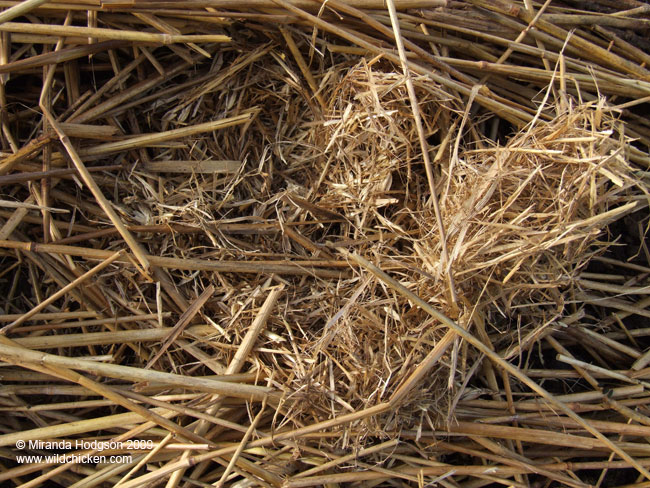
Mouse nest
I dragged off most of the straw and put it on the compost heap. Underneath the top layer, the remaining straw had turned black and was rotting down. I carefully rummaged through it to see if there were any hibernating frogs or toads tucked away – there weren’t – and then chopped this layer into the soil with the spork, which did a fine job of cutting it up.
That done, I started digging it over. As I had hoped, the soil was well drained and crumbly; the manure added last autumn had been dry and lumpy when first mixed in and now it had softened so that the lumps were easy to break up and mix in. It looks rich and soft and should be good for the courgettes and squashes I’m planning to put in.
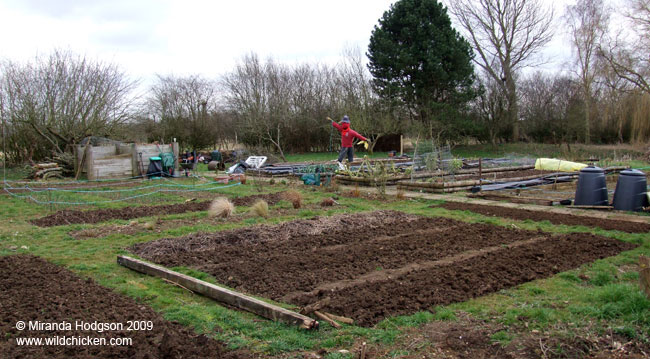
Prepared beds
In the beds next to these, the soil had been left exposed and was very different – big hard lumps that were difficult to break up. We decided to plant potatoes in them as they will help to break the soil up. When we put them in, the ground was so chunky that we pulled out the clods of soil and put them to one side, filled the holes with compost and planted the potatoes into those. Potatoes are renowned for breaking up hard, claggy soil and hopefully they will do the job.
While I was busy with all that, Karl was having his own soil experience. We had decided to buy in a load of mixed soil, grit and compost – partly for potting and partly for soil conditioning in the beds with the heaviest soil. Not liking to do things by half measures, Karl ordered 7.5 tonnes of it, with the idea that the lorry would dump it right outside the garden gate and we could barrow it in easily. When the lorry turned up, however, the driver didn’t like the look of the field and wouldn’t drive through it in case the lorry got stuck, so he dumped it in the farm yard instead.
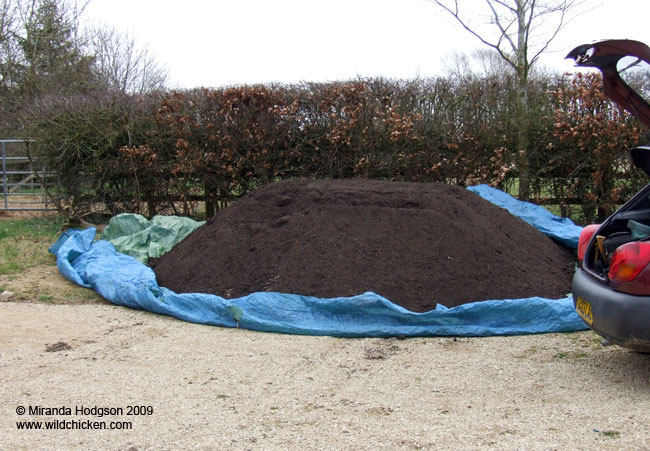
The soil
How to shift it? We could have used the tractor, but Karl thought it was a good opportunity for some extra exercise and decided to make it into a major training session for him and a friend’s son, Ben, who he’s been teaching some martial arts to. Ben is just the right age and size for a borrowed teenager and he agreed to the challenge, though he might not have done if he’d known what he was in for.
From the farm yard to the garden, via the path through the field, is 160m. Ten trips makes a mile (1.6km). Of course, half of all the trips had to be made with a full barrow, but the soil mix was at least dry, so it could have been worse.
They got started, going back and forth, back and forth. Karl was obviously revelling in it and Ben, unused to the ‘Harsh Tutelage of Pai Mei’, was at times looking distinctly strained. After a couple of hours I asked Karl ‘Why don’t you stop for a bit, or have a change of pace?’
‘We are having a change of pace’ he said ‘We’re going to run with the empty barrows’. And so they did. Men.
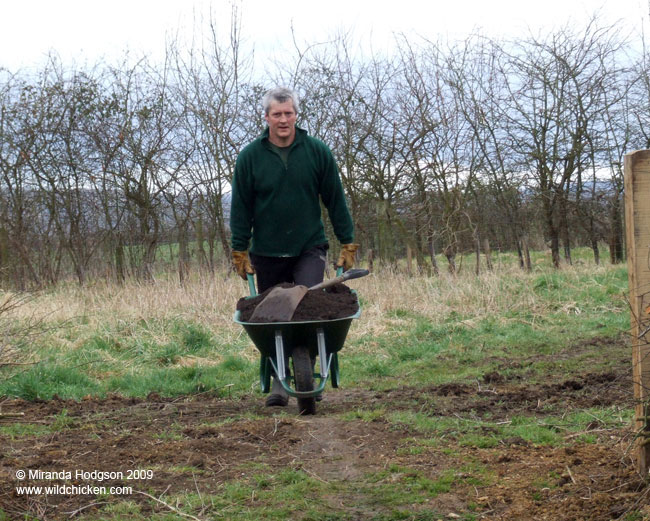
Karl with a barrow
At the end of it, the soil was moved and Karl had covered 18 miles (nine of them with a full barrow) and Ben had done around six. Ben looked tired but very pleased with himself for doing it and not giving up. Later, we had a request from one of his friends, who also wanted the challenge of moving large amounts of soil, but it was all done by then.
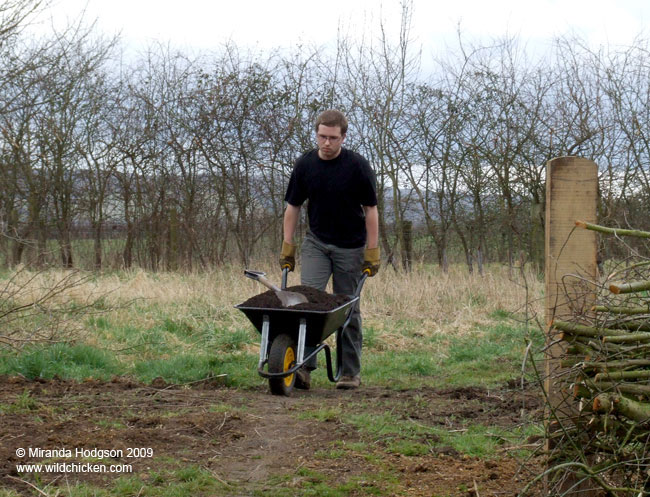
Happy teenager
One extra thing that needed doing was to put in wooden stakes around the onion and garlic beds and string bailing twine around them, as a deterrent for whoever’s dog it is that has been walking over the beds and treading on the new shoots.
© Copyright Miranda Hodgson 2009